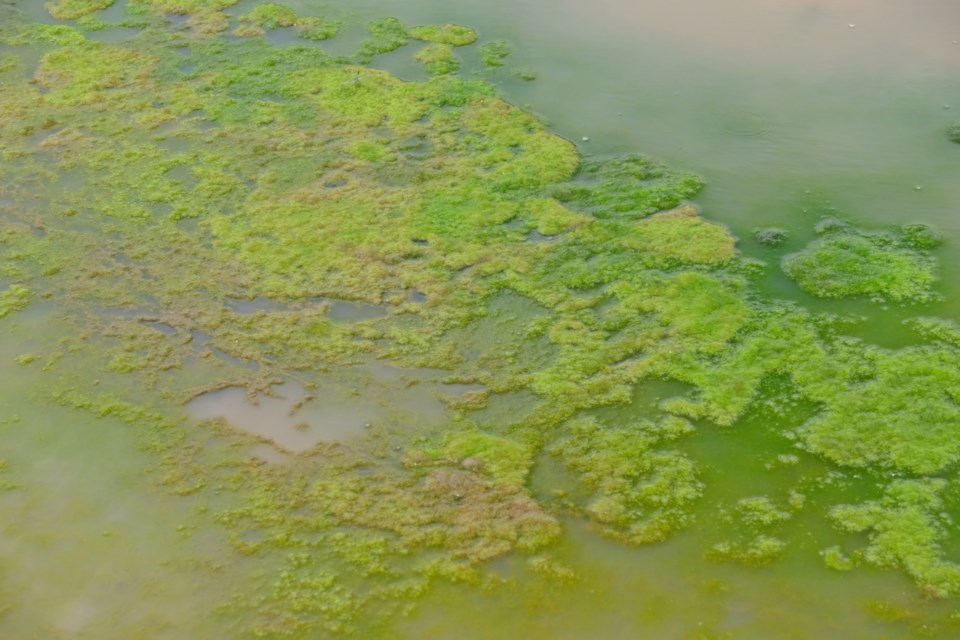A blue-green algal bloom has been confirmed in the French River, which drains Lake Nipissing.
The Ministry of the Environment, Conservation and Parks says that samples taken Sept. 16 from that bloom, confirmed the presence of blue-green algae (cyanobacteria).
The samples contained a species of cyanobacteria that can produce toxins.
Blooms are not anchored and can move from one location to another through wind and water currents. New blooms can also form. All residents on lakes and rivers should look for blooms in their area.
“Blue-green algal blooms have an unsightly pea soup appearance and foul smell, and can produce toxins. Residents should avoid using or drinking water from areas where blooms are visible,” Public Health said in a release.
Toxins from blue-green algae can spread throughout the water body, with the highest concentrations usually found in blooms and scum on the shoreline. These dense accumulations pose the greatest potential risks to people and pets.
The algae toxins can irritate a person's skin and, if ingested, cause diarrhea and vomiting. If a person ingests high levels of toxin, they could suffer liver and nervous system damage.
People using lakes and rivers to be on the lookout for algal blooms. If you see or hear of a bloom anywhere near your property or water intake line:
- Avoid using the water for drinking, bathing, or showering, and do not allow children, pets, or livestock to drink or swim in the bloom.
- Be aware that shallow drinking water intake pipes can pump in blue-green algae.
- Do not boil the water or treat it with a disinfectant, like bleach. This action breaks open the algae cells, which releases more toxins into the water.
- Do not rely on water jug filtration systems as they may not protect against the toxins.
- Avoid cooking with the water because food may absorb toxins from the water during cooking.
- Follow the Ministry of the Environment, Conservation and Parks Guide to Eating Ontario Fish . Exercise caution with respect to eating fish caught in water where blue-green algal blooms occur. Residents should not eat the liver, kidneys, and other organs of fish.



